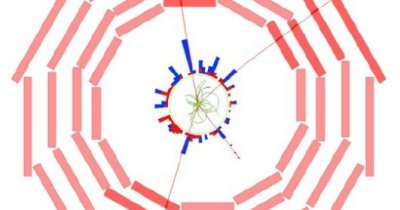E
EarthlingX
Guest
physicsworld.com : LHC sees its first ZZ event
...Nov 11, 2010
The Large Hadron Collider (LHC) at CERN in Geneva has produced its first pair of Z bosons, based on data released by the compact muon solenoid (CMS) collaboration. Seeing this first pair is an important step in the giant collider's hunt for the Higgs boson because the generation and analysis of many more such events could provide one of the key signatures of the elusive Higgs.
A quartet of muons flying through CMS
Believed to provide all particles with mass, the Higgs boson is the last missing piece of the Standard Model of particle physics. The LHC, designed to collide protons into one another at energies of up to 14 TeV, is expected to find the elusive boson – assuming that the Higgs does indeed exist.
Evidence for the Higgs will not come as a single observation. Instead, physicists must accumulate data related to the energy distribution of the particles that the Higgs decays into. One of the cleanest such decay signatures is the transformation of the Higgs into two Z bosons – particles that are one of the carriers of the weak nuclear force. The Z bosons then decay into pairs of heavy charged particles known as muons, which leave an unmistakable footprint in a detector such as CMS.




